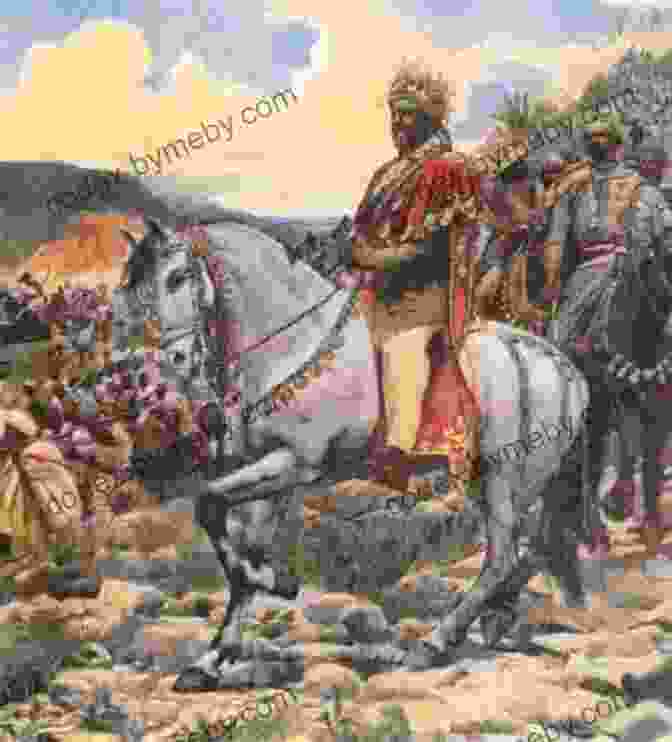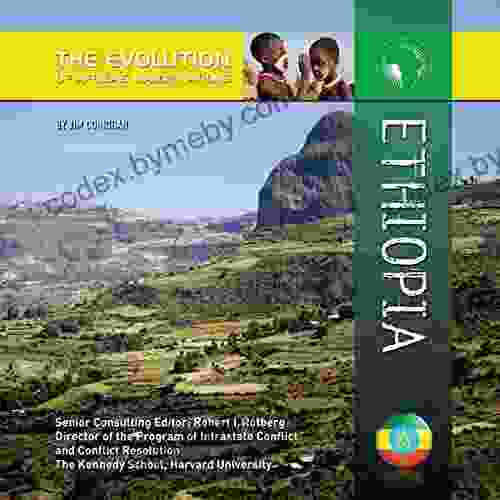Ethiopia: The Evolution of Africa's Major Nations

**Unveiling the Rich History and Enduring Legacy of Ethiopia**

4 out of 5
| Language | : | English |
| File size | : | 10267 KB |
| Text-to-Speech | : | Enabled |
| Screen Reader | : | Supported |
| Enhanced typesetting | : | Enabled |
| Word Wise | : | Enabled |
| Print length | : | 97 pages |
Nestled in the heart of the Horn of Africa, Ethiopia stands as a beacon of resilience and cultural continuity. With a history spanning millennia, this ancient land has witnessed the rise and fall of empires, the shaping of civilizations, and the unfolding of transformative events that have left an indelible mark on the continent of Africa.
Ancient Roots and the Aksumite Empire
Ethiopia's origins can be traced back to the ancient kingdom of Aksum, which flourished from the 1st century BCE to the 7th century CE. Aksum emerged as a major power in the Red Sea region, controlling a vast trading network and establishing diplomatic relations with distant empires such as Rome and Persia. Its rulers adopted Christianity in the 4th century, making Ethiopia one of the earliest Christian nations in the world.

The Aksumite Empire left behind a legacy of architectural wonders, including the towering obelisks of Aksum, monumental churches, and elaborate tombs. These structures showcased the kingdom's advanced engineering and artistic skills, demonstrating the sophistication of Ethiopian civilization from an early period.
The Zagwe Dynasty and the Rise of Lalibela
Following the decline of Aksum, Ethiopia entered a period of fragmentation, with various regional kingdoms vying for power. In the 12th century, the Zagwe Dynasty, hailing from the Lasta region, emerged as a unifying force. Under their rule, Ethiopia experienced a resurgence of Christianity and the construction of numerous rock-hewn churches.

Lalibela, the capital of the Zagwe Kingdom, is renowned for its cluster of 11 monolithic churches. These churches, carved directly into the volcanic tuff rock, showcase the architectural genius of the time. Their intricate designs, elaborate interiors, and remarkable preservation make Lalibela a UNESCO World Heritage Site and a must-visit destination for travelers seeking to delve into Ethiopia's rich cultural heritage.
The Solomonic Dynasty and Imperial Ethiopia
In the 13th century, the Solomonic Dynasty ascended to power, claiming descent from King Solomon and Queen of Sheba. For over 700 years, the Solomonic Emperors ruled Ethiopia, leaving behind an enduring legacy that shaped the nation's political, social, and cultural landscape.

The Solomonic period witnessed the consolidation of imperial power, the expansion of Ethiopia's territory, and the strengthening of its Christian traditions. The emperor became the embodiment of the nation, revered as the "Lion of Judah" and the earthly representative of God on earth.
Emperor Haile Selassie I, who reigned from 1930 to 1974, played a pivotal role in modernizing Ethiopia. He introduced national reforms, promoted education, and forged diplomatic alliances with international powers. Haile Selassie's legacy remains controversial, but his impact on Ethiopia's transformation cannot be overstated.
Challenges and Triumphs in the 20th Century
The 20th century presented Ethiopia with both challenges and opportunities. The Italian occupation from 1935 to 1941 marked a period of turmoil and resistance. Ethiopia's fierce opposition to foreign invasion earned it international admiration and helped galvanize African solidarity.

After the liberation from Italian rule, Ethiopia embarked on a path of economic and social development. The establishment of Addis Ababa as the capital city and the implementation of modern education systems laid the foundation for Ethiopia's progress.
Despite these advancements, Ethiopia faced significant challenges. The Derg, a military junta that seized power in the 1970s, imposed a repressive regime marked by human rights violations and political turmoil. The 1984-1985 famine caused widespread suffering and cast a shadow over Ethiopia's development trajectory.
Contemporary Ethiopia: Transformation and Growth
Since the establishment of the Federal Democratic Republic of Ethiopia in 1991, the country has undergone a period of political and economic transformation. The government has implemented a series of reforms aimed at promoting democracy, human rights, and sustainable development.

Ethiopia has made significant progress in various sectors. It is one of the fastest-growing economies in Africa, with investments pouring into infrastructure, manufacturing, and services. Its capital, Addis Ababa, is a vibrant and cosmopolitan city, serving as the political and economic hub of the region.
Despite these achievements, Ethiopia continues to face challenges, including poverty, inequality, and ethnic tensions. However, the country's strong sense of national identity, its rich cultural heritage, and its commitment to progress provide a solid foundation for overcoming these obstacles and building a better future for its citizens.
Ethiopia's story is a tapestry woven with ancient glory, enduring traditions, and the aspirations of a modern nation. From its ancient Aksumite roots to its contemporary transformation, Ethiopia has played an influential role in shaping the history and destiny of Africa. Its rich heritage, diverse cultures, and indomitable spirit continue to captivate and inspire, making it a land of endless fascination.
This book, Ethiopia: The Evolution of Africa's Major Nations, is an in-depth exploration of Ethiopia's captivating history and its profound impact on the continent of Africa. Through comprehensive research and vivid storytelling, it unveils the mysteries of a land that has been at the crossroads of civilizations for centuries.
Whether you are a historian, a cultural enthusiast, or simply someone curious about the world's most fascinating nations, this book will transport you to the heart of Ethiopia's vibrant and ever-evolving tapestry. Its pages hold the promise of a journey into the past, present, and future of an extraordinary country that continues to inspire and amaze.
4 out of 5
| Language | : | English |
| File size | : | 10267 KB |
| Text-to-Speech | : | Enabled |
| Screen Reader | : | Supported |
| Enhanced typesetting | : | Enabled |
| Word Wise | : | Enabled |
| Print length | : | 97 pages |
Do you want to contribute by writing guest posts on this blog?
Please contact us and send us a resume of previous articles that you have written.
 Book
Book Novel
Novel Page
Page Chapter
Chapter Text
Text Story
Story Genre
Genre Reader
Reader Library
Library Paperback
Paperback E-book
E-book Magazine
Magazine Newspaper
Newspaper Paragraph
Paragraph Sentence
Sentence Bookmark
Bookmark Shelf
Shelf Glossary
Glossary Bibliography
Bibliography Foreword
Foreword Preface
Preface Synopsis
Synopsis Annotation
Annotation Footnote
Footnote Manuscript
Manuscript Scroll
Scroll Codex
Codex Tome
Tome Bestseller
Bestseller Classics
Classics Library card
Library card Narrative
Narrative Biography
Biography Autobiography
Autobiography Memoir
Memoir Reference
Reference Encyclopedia
Encyclopedia Steve Gold
Steve Gold Michael Brooks
Michael Brooks Preston Grassmann
Preston Grassmann Chris Parsons
Chris Parsons Chris Blackley
Chris Blackley Martin Pistorius
Martin Pistorius William Rosenberg
William Rosenberg Ciena Foxx
Ciena Foxx Francis Bacon
Francis Bacon Christie Matheson
Christie Matheson Chris Long
Chris Long Michael G Starkey
Michael G Starkey Leslie Valiant
Leslie Valiant Kevin Nichols
Kevin Nichols June Goulding
June Goulding Christopher Taunton
Christopher Taunton Christopher Nyerges
Christopher Nyerges Chris Crowe
Chris Crowe Massoma Alam Chohan
Massoma Alam Chohan Edward Day
Edward Day
Light bulbAdvertise smarter! Our strategic ad space ensures maximum exposure. Reserve your spot today!
 Ivan CoxFollow ·17.2k
Ivan CoxFollow ·17.2k Rudyard KiplingFollow ·7.6k
Rudyard KiplingFollow ·7.6k Jarrett BlairFollow ·19.9k
Jarrett BlairFollow ·19.9k Jerome PowellFollow ·15.4k
Jerome PowellFollow ·15.4k Ira CoxFollow ·14.6k
Ira CoxFollow ·14.6k Braden WardFollow ·11.2k
Braden WardFollow ·11.2k Duane KellyFollow ·10.9k
Duane KellyFollow ·10.9k Shaun NelsonFollow ·2.5k
Shaun NelsonFollow ·2.5k

 Rick Nelson
Rick NelsonThe Power of Positivity: 51 Motivational Quotes to...
In the tapestry of life, we encounter...

 Lee Simmons
Lee SimmonsThe Indian War of 1864: A Devastating Conflict in the...
The Indian War of 1864 was a brutal...

 Eddie Bell
Eddie BellQueen: The Unauthorized Biography: Unraveling the Secrets...
Prepare to delve into the captivating...

 Dion Reed
Dion ReedUnveiling the Imperfect Gems of Trauma and...
In the tapestry of...

 Desmond Foster
Desmond FosterThirty-Six Years in the Rockies: A Timeless Masterpiece...
A Journey Through Time and...
4 out of 5
| Language | : | English |
| File size | : | 10267 KB |
| Text-to-Speech | : | Enabled |
| Screen Reader | : | Supported |
| Enhanced typesetting | : | Enabled |
| Word Wise | : | Enabled |
| Print length | : | 97 pages |














